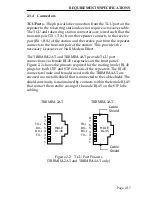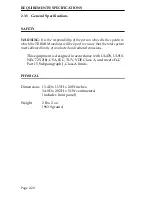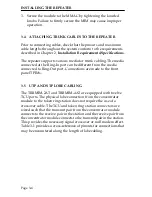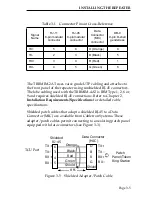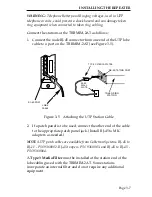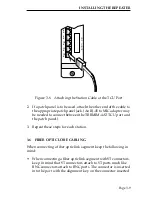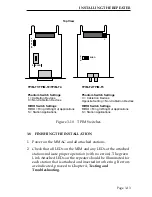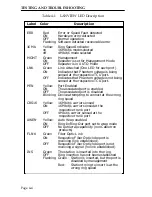
INSTALLING THE REPEATER
Page 3-10
into the alignment slot on the port. The connector is then turned
to lock it down.
•
The physical communication link consists of two strands of
fiber optic cabling: the Transmit (TX) and the Receive (RX). The
Transmit strand from the applicable port on the module will be
connected to the Receive port of a fiber optic device at the other
end of the segment. For example, TX of the applicable port on
the module will go to RX of the other fiber optic device. The
Receive strand of the applicable port on the module will be
connected to the Transmit port of the fiber optic device. For
example, RX of the applicable port on the module will go to TX
of the other fiber optic device.
It is recommended that you label the fiber optic cable to indicate
which fiber is Receive and which is Transmit. When you buy
fiber optic cable from Cabletron Systems, it is labeled so that: at
one end of the cable, one fiber is labeled 1, and the other fiber is
labeled 2. This pattern is repeated at the other end of the cable.
If you did not purchase your cable from Cabletron Systems, be
sure you have labeled your cable in the manner described
above.
Caution:
Do not touch the ends of the fiber optic strands, and do not let
the ends come in contact with dust, dirt, or other contaminants.
Contamination of the ends can cause problems in data transmissions.
If the ends become contaminated, clean them with alcohol using a soft,
clean, lint free cloth.
Install the fiber optic ring cables as follows:
Caution:
Fiber optic cables must be handled with care. Avoid twisting or
bending the cable sharply. Do not touch the end of an exposed optic fiber.
1. Locate the fiber optic cable.
2. If the cables are not labeled or color coded, determine the
function for each cable and label them now.
3. Remove the protective covers from the ST connections.


